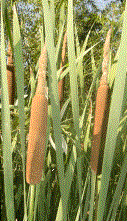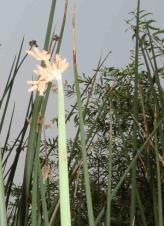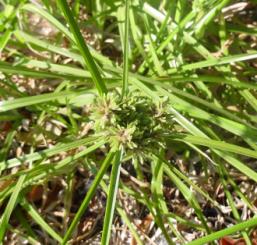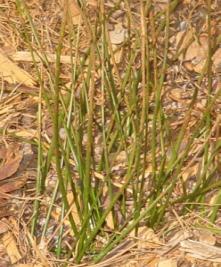Broad leaved Cattail
Typha latifolia
NATIVE
Cattails are rhizomatous
perennial plants with long, slender green stalks topped with brown,
fluffy, cigar-shaped flowering heads.
The spike is green when young, and becomes brown as it ages.
There is no gap between the upper male flowers and the lower female
flower (the cat-tail)on spike. Cattails
are an indicator wetland species that can tolerate flood cycles, and are
always found in or near water.



